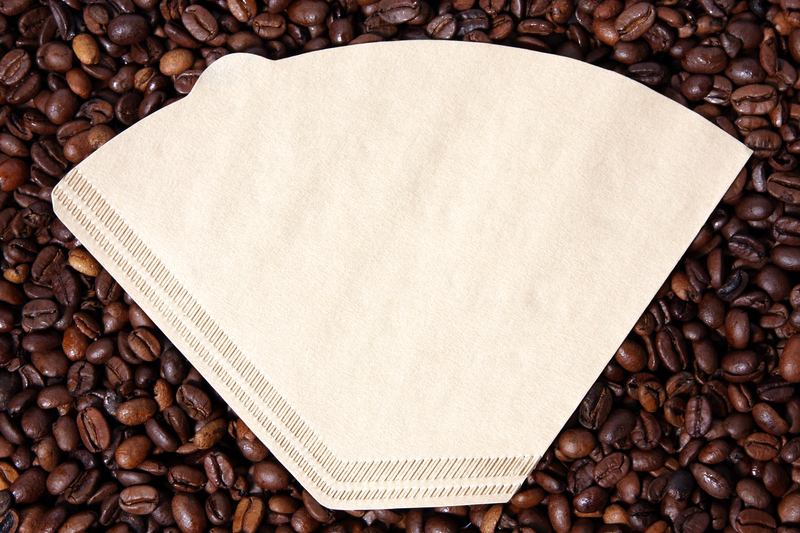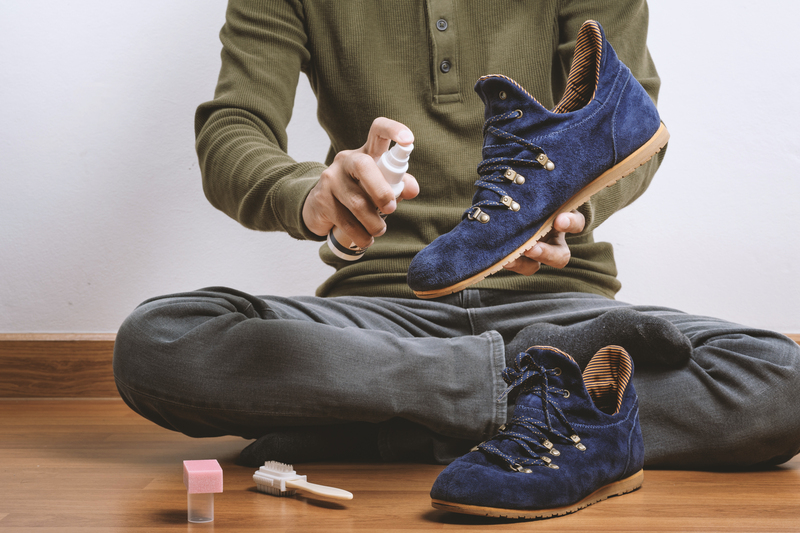The Best Practices for a Mold-Free Bathroom
Posted on 02/07/2025
The Ultimate Guide to Maintaining a Mold-Free Bathroom
Keeping your bathroom free from mold isn't just about appearances--it's also a crucial step in preserving your health and the structural integrity of your home. Bathrooms, with their frequent high humidity and potential for standing water, make perfect breeding grounds for mold. Left unchecked, mold can not only cause serious respiratory problems but also lead to costly repairs. In this article, you'll discover the best practices for a mold-free bathroom, ensuring a clean, healthy, and inviting space for you and your family.

Why Bathroom Mold is a Serious Issue
Mold in bathrooms isn't simply unappealing--it can threaten your family's well-being. Mold spores can trigger allergies, exacerbate asthma, and in some cases lead to more severe health problems. Additionally, mold growth often signals lingering moisture issues that may damage paint, drywall, and even structural beams. A mold-free bathroom should be at the top of your home maintenance priorities.
The Science Behind Mold Growth in Bathrooms
Mold thrives in humid, warm environments with poor air circulation--conditions commonly found in bathrooms. Even everyday activities, such as showering and bathing, introduce excess moisture to the air and on surfaces. If water isn't properly vented, it quickly provides an ideal canvas for mold spores to settle and multiply.
- Humidity: Levels above 60% can trigger mold growth within 24-48 hours.
- Poor ventilation: Steam and condensation are not effectively removed.
- Porous surfaces: Grout, caulk, and walls absorb and retain moisture.
To achieve a mold-resistant bathroom, it's vital to disrupt these conditions with targeted strategies.
Comprehensive Best Practices to Prevent Bathroom Mold
1. Optimize Bathroom Ventilation
Proper ventilation is the cornerstone of a mold-free bathroom. By reducing humidity, you make your bathroom less inviting to mold. Here's how to ensure maximum airflow:
- Install or upgrade an exhaust fan: Choose a fan rated for your bathroom's size (measured in CFM--cubic feet per minute). Run it during and for at least 30 minutes after every shower or bath.
- Open windows: If possible, crack a window to let humid air escape and fresh air flow in.
- Keep doors open after use: This allows trapped moisture to dissipate more quickly.
- Use dehumidifiers: In particularly humid climates, a small bathroom dehumidifier can maintain optimal humidity levels (~50-55%).
Tip: Regularly clean your exhaust fan's cover and blades to ensure they operate efficiently.
2. Regularly Clean and Maintain Surfaces
Frequency matters when it comes to preventing mold in bathrooms. Mold spores, invisible to the naked eye, are ever-present in the air. Consistent cleaning prevents the spores from getting a foothold:
- Disinfect shower walls, tubs, and floors: Use a mild bleach solution, hydrogen peroxide, or commercial anti-mold spray once a week.
- Scrub tile grout and caulk: Grout is particularly prone to mold. Clean with a stiff brush and baking soda paste or non-abrasive cleaner.
- Replace moldy caulk and grout: If stains persist, remove and replace them to stop further growth.
- Wash and dry bath mats, towels, and curtains regularly: Damp fabrics invite fungus--dry them thoroughly after each use and wash weekly.
Note: Natural cleaning solutions, like vinegar and tea tree oil, can be effective in maintaining a mold-free bathroom environment without harsh chemicals.
3. Control Moisture and Dry Wet Surfaces Promptly
Mold needs only a day or two of lingering moisture to germinate. After every shower or accidental spill, wipe down wet surfaces with a squeegee or absorbent towel. Pay special attention to:
- Shower walls and glass doors
- Bathtubs
- Sinks and countertops
- Floor tiles around the tub or shower
For maximum mold prevention, ask everyone in your household to follow a "wipe down" routine after use, and keep squeegees handy for easy access.
4. Fix Leaks and Address Water Issues Immediately
Small leaks are one of the most overlooked causes of bathroom mold. Even a minor drip can create a continuously damp area where mold thrives. Inspect these critical areas regularly:
- Under the sink: Check P-traps and water supply lines for condensation or leaks.
- Toilet bases and seals: Replace wax rings and gaskets if you see water pooling.
- Shower fixtures and grout: Look for water stains, bubbling paint, or persistent dampness.
- Ceilings and walls: Watch for signs of water damage, especially if a bathroom is below another plumbing line.
Repair any leaks promptly to maintain a mold-proof bathroom and avoid long-term structural issues.
5. Choose Mold-Resistant Materials During Remodeling
If you're renovating your bathroom or building a new one, invest in mold-resistant fixtures and finishes. Modern materials are designed to minimize moisture absorption and repel spore growth, making it easier to achieve a truly mold-free bathroom:
- Install moisture-resistant drywall (greenboard or cement board) instead of standard drywall around wet areas.
- Use mold-inhibiting paint on walls and ceilings.
- Seal grout and tile: Apply penetrating grout sealers annually to add an extra layer of defense.
- Choose non-porous surfaces: Quartz, porcelain, glass, and certain solid-surface materials are less likely to harbor moisture than stone or unsealed wood.
Upgrading your materials doesn't only improve durability--it is an investment in long-term mold prevention in your bathroom.
Advanced & Seasonal Mold Prevention Strategies
Maintain Proper Humidity Levels Year-Round
Seasonal changes can drastically affect bathroom humidity. In summer, hot air combined with showers can turn your bathroom into a steam room. In winter, unventilated bathrooms suffer from condensation on cold surfaces. Monitor with a digital hygrometer and keep levels under control:
- Run the exhaust fan even in winter to remove condensation.
- Crack a window after hot showers in the summer months.
- Add weatherstripping around windows and doors to reduce unexpected drafts that can cause cold surfaces and condensation.
Declutter and Rearrange for Better Airflow
Overcrowded shelves, storage bins under sinks, and excessive decor can trap moisture and reduce airflow. Minimalistic bathrooms not only look chic but are far easier to keep dry and clean. Consider storing toiletries in wall-mounted racks, and avoid placing fabric totes or baskets in humid areas.
Perform Regular Mold Inspections
Prevention is proactive. Schedule a quick mold check every month:
- Examine hidden corners: Behind toilets, under sinks, and around shower doors.
- Look for discoloration: Black, green, or brown patches are telltale signs.
- Smell for mustiness: An earthy, unpleasant odor could indicate hidden mold.
If you suspect a hidden issue or have recurring problems, it may be wise to call in a professional mold remediation company.
Best Cleaning Solutions for Mold-Free Bathroom Maintenance
DIY Mold Removal and Prevention Recipes
- Vinegar Solution: Undiluted white vinegar can be sprayed directly onto affected surfaces--leave for 1 hour, then scrub and rinse.
- Hydrogen Peroxide: Mix 1 part 3% hydrogen peroxide with 2 parts water. Spray, allow to foam, scrub, and wipe clean.
- Baking Soda Paste: Combine with water to form a paste, apply to grout, scrub, and rinse.
- Tea Tree Oil Spray: Mix 1 teaspoon of tea tree oil with 1 cup of water. Spray and leave--it's a natural fungicide.
These natural solutions can help you minimize chemical exposure while maintaining a mold-free bathroom environment. However, for tough infestations, a commercial EPA-registered mold remover may be necessary.
When to Seek Professional Help
If you notice persistent, spreading mold, or if more than 10 square feet is affected, professional treatment is recommended. Mold experts can diagnose structural moisture issues, safely remove infestations, and advise on preventive upgrades for continual bathroom mold control.

Essential Tips for a Mold-Free Bathroom Lifestyle
Consistency is key. Beyond cleaning and maintenance, these simple everyday habits ensure long-term success in keeping your bathroom mold-free:
- Hang towels and washcloths to dry after every use.
- Keep the shower curtain open after bathing to help air circulate and dry both sides quickly.
- Use a bathroom squeegee daily on shower walls and glass doors to minimize water spots and mold opportunities.
- Clean out and dry all bathroom trash cans weekly as well as soap dishes or trays where water may collect.
These straightforward routines can effectively reduce mold spores and maintain a clean, healthy bathroom for your family.
Conclusion: Enjoy a Fresher, Healthier, and Mold-Free Bathroom
Embracing the best practices for a mold-free bathroom isn't just about cleanliness--it's about creating a safe and comfortable home environment. By combining modern materials, smart cleaning solutions, proper ventilation, and regular inspections, you can keep bathroom mold at bay for good. Remember: awareness and proactive maintenance are your greatest allies in the fight against bathroom mold.
Start implementing these mold prevention tips today, and enjoy a fresher, healthier bathroom for years to come!



